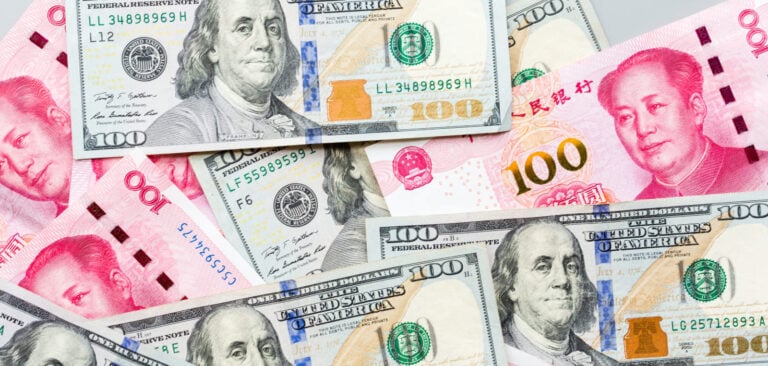Selling on Amazon can be a fairytale or a nightmare depending on your cash flow. That’s why keeping up with the latest Amazon seller payment schedule guidelines is critical.
Because a lengthy seller payout process may be part of Amazon, you may need funding more frequently so you don’t put your inventory, advertising, and other investments at risk while you wait for your disbursement from Amazon.
In this article, we’ll take a closer look at how Amazon’s seller payment schedule works so you always know when to expect your next Amazon seller payout. We’ll also walk through proven ways to strengthen your cash flow, so you can keep the sales coming while you wait.
Understanding the Amazon Seller Payment Schedule
- How Does Amazon Pay Sellers? Your Top FAQs Answered
- Know the Lingo: Amazon Seller Payment Schedule Terminology
- Why Haven’t I Been Paid Yet?
- How to Stay a Step Ahead of Amazon’s Payment Schedule
How Does Amazon Pay Sellers? Your Top FAQs Answered
Congratulations, you’ve just made a heap of sales. Excited to check out your increased account balance, you head over to your business bank account, log in, and…nothing.
One of the first (and possibly hardest) lessons every Amazon seller must learn is that there are a series of steps your money will go through before Amazon pays you.
While this can be a tough pill to swallow, the truth is that the Amazon payout process is there to help ensure all chargebacks, refunds, disputes, and guarantee claims are handled correctly before your sales are paid out.
In other words, the payout process is there to protect you, Amazon, and the customer.
By holding your marketplace payments for a set time, Amazon can help make sure your customers are satisfied with their products before releasing funds. This takes a big element of customer service off your plate.
Now that you know why Amazon keeps your cash for as long as they do, let’s answer some of the most frequently asked questions about Amazon’s seller payment schedule.
How Long Does It Take to Get Paid as an Amazon Seller?
If everything is up-to-date and you don’t have an unavailable balance, Amazon will remit payment every 14 days.
Are Amazon Seller Payments Paid Weekly?
Typically, Amazon sellers do not get paid weekly. Bi-weekly payments are more common.
Do Amazon Sellers Get Paid Right Away?
Amazon doesn’t pay sellers right away. However, if you’ve been selling on Amazon for 10 years or more, you may qualify for next-day payouts. (More on this below!)
How Long Does It Take for Amazon to Pay Its Sellers?
While payments are typically released bi-weekly, it can take up to five business days to receive the payment in your bank account after Amazon remits it.
How Do I Check My Payment Schedule on Amazon?
Check your Payments Dashboard to see when Amazon will pay you and how much. This information updates automatically in the Payment report.
You can also visit the Account Health page in Seller Central to learn about your account performance, Amazon’s payment policy, and if you have an account level reserve that may be delaying payment.
How the Amazon Seller Payment Schedule Works
Here’s a recap of how the Amazon seller payment schedule works:
- You receive funds in your Amazon seller account after a customer makes a purchase.
- Amazon tracks the customer payment. To account for potential refund requests or chargebacks, Amazon reserves your funds for about seven days after the product delivery date.
- Once your seller account is settled and has a positive balance, Amazon will send your money to your bank account via ACH or electronic funds transfer every 14 days.
- After Amazon initiates the payment, it can take up to five business days for your money to reach your bank account.
Net Result: Getting your Amazon payouts can take closer to three weeks than two. Hence the big question . . .
How Can I Get Amazon Seller Payouts Faster and on My Schedule?
Designed specifically for cash flow issues that arise from slower marketplace payouts, the SellersFi Daily Payout cuts your wait time from two weeks to 24 hours.
With the Daily Payout, you can receive up to 90% of your previous day’s sales with rates as low as 0.5% of the advanced amount. There is zero prepayment penalty and no impact on your personal credit score.
Let’s cover all the factors in play when it comes to the Amazon Seller Payment Schedule. Let’s also cover all of your options.
Know the Lingo: Amazon Seller Payment Schedule Terminology
If you’ve come across some terminology you’re not sure about, you’re not alone. The terms Amazon uses to describe its seller payment schedule can be difficult to understand. Here’s a straightforward overview of the terms to know.
Account Level Reserve
Your account level reserve refers to the money Amazon sets aside to help you fulfill your obligations as a seller. Namely, ensuring that you have enough money to cover customer returns, chargebacks, or guarantee claims after your customer receives their product.
You might also have an account level reserve if:
- You’re a new seller
- Your account is under review
- Your seller performance has fallen below Amazon’s benchmarks
- Amazon is withholding income tax from you due to local regulations
Daily Payouts
Although Amazon technically has a daily payouts option, the name of this feature can be misleading.
If you click on the Request Transfer button option on your dashboard, you can access and receive daily payouts from Amazon. But these payments don’t happen in real time.
Next-day Payouts
If you’re a veteran seller who’s been doing business on Amazon for over 10 years, you may qualify for next-day payouts, meaning you get paid the day after a sale.
Disbursement
Disbursement is when funds clear Amazon’s reserve period and make their way to you.
The day you receive your payment is your disbursement date. Amazon also has a disbursement tracker — accessible from the payment page under the disbursements tab — so you can locate your payment stage at any time.
Unavailable Balance
Your unavailable balance is the sales proceed Amazon won’t release to you until you’ve cleared the holding period and your account is in good standing.
Why Haven’t I Been Paid Yet?
After making it through the expected Amazon payment schedule, you may find that you still haven’t been paid. This can be frustrating, but don’t worry. There are often reasonable explanations.
A few common reasons for a delay in disbursement could include:
- Missing or incorrect bank account information
- Invalid bank account listed as the Deposit Method in your seller account setting
- Amazon-prohibited online payment systems, such as PayPal, are set as your payment account.
- A negative or zero account balance
Once you’re sure that everything is correct on your end, and you’re still not receiving payments according to the Amazon seller payment schedule, check out the Amazon support page for help.
How to Stay a Step Ahead of the Amazon Seller Payment Schedule
A strategic funding plan is key to ensuring you have enough money to operate and grow your business, no matter when you receive your marketplace payouts.
Let’s take a look at some proven ways to strengthen your cash flow and thrive on Amazon.
1. Stay on Top of Your Numbers
Sometimes making the most of your cash flow is about maximizing the numbers and making data-driven decisions. With an all-in-one analytics platform like Sellers Signals, it’s easy to understand your sales behavior and get a sense of your future performance.
From a single visual dashboard, you’ll be able to see sales forecasts from across all active marketplaces, track your store’s core KPIs in real-time, and always know whether you’re above or below your projections.
2. Create a Cash Reserve
Things have a way of popping up when we least expect them. That’s why it’s important to set yourself up for success by creating a cash reserve or business emergency fund.
To commit to saving, consider setting up a monthly auto-transfer, with a percentage of your revenue going straight into your emergency account.
While you want to go easy on dipping into your savings too often, having a cash reserve can help provide peace of mind and keep the business moving while you wait for your Amazon payouts.
3. Expand Your Selling Horizons
Rule number one in modern business? Diversify, diversify, diversify.
Don’t be afraid to explore other sales channels to broaden your reach and diversify your sales beyond Amazon.
Research by Stitch Labs found that businesses that sell on two marketplaces make 190% more revenue than those that sell on a single marketplace.
Adding the right channels can help increase your revenue, diversify your income streams, and vary your payout dates so that you won’t be 100% reliant on Amazon.
4. Borrow from Family and Friends
If your cash flow gap is wider than you hoped and you have someone in your family or friend group who can loan you the funds, this is another option you could consider.
As with any other business deal, you’ll want to be sure to have your terms spelled out in an agreement signed by all parties to keep things fair and legal.
5. Use a Business Credit Card
A business credit card is a classic emergency-use option. But be careful. Credit cards are notorious for racking up interest quickly, so you’ll want to choose wisely.
Some cards offer 0% balance transfers for up to 24 months, which can help you spread out payments if you can’t pay in one lump sum. Whatever you choose, try to get a business card with benefits like points or cash back to get the most for your money.
6. Take Out a Traditional Bank Loan
Since most banks don’t understand e-commerce, securing a traditional bank loan can be challenging. But if your business meets the criteria and you can get a reasonable interest rate, a traditional bank loan may be worth a try.
7. Secure a Line Of Credit
If there are other investments you want to make to boost your ROI on Amazon, a flexible line of credit could be an option. With the right solution, you can even save in interest and fees compared to most banks, loans, and credit cards.
At SellersFi, we designed our Working Capital solution to be far more flexible and affordable than a traditional loan. Created specifically for DTC brands, B2B sellers, and marketplace merchants, you can be approved for a line of credit up to $5 million in as little as 48 hours and with no usage fees.
Once approved, you can withdraw funds on an as-needed basis. Use these to launch new products, increase advertising efforts, expand into new marketplaces, and more. With Working Capital, you’ll never miss a profitable opportunity because you didn’t have the cash.
Work With (Not Against) the Amazon Seller Payment Schedule
The Amazon seller payment schedule doesn’t have to hold you back. You have options for getting your Amazon seller payouts quickly.
Start by knowing your numbers. Organize your sales data, create cash flow management reports, and build up your savings. With your financial house in order, you’ll be ready to branch out into new marketplaces and geographies to expand your business and diversify your income streams.
Most critically, make sure you have a strategic funding plan in place. This way, you’ll always have access to flexible capital when you need it.
At SellersFi, our Daily Payout clients grow 75% faster (on average) than sellers not using the Daily Payout. Ready to learn more about how our flexible funding solutions can help? Register for an account today with zero commitment.



